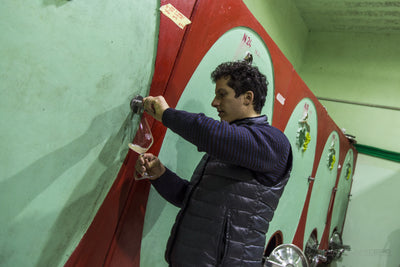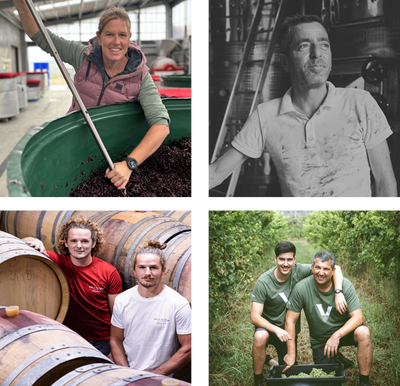The history of Tuscany tells a story of a number of different grapes and vineyard sites. But the "Burgundy fever" of the last few years has influenced the minds of Italian producers: Chianti has a new village labelling while Montalcino obsesses over single vineyards wines. Now, if you look at terroir in a Burgundian way you might find a problem here; none of the places where sangiovese grows have a single main soil type. Also the areas are so vast that it is hard to tell if a village can create a specific style of wine. Montalcino is the best example; soils here can change row by row. Siro Pacenti told me once that the secret of making single vineyard wine here is to reach the grapes' uniformity during the growing season.
If we go back in the history of single vineyard sangiovese we will read about the famous movie producer Gian Vittorio Baldi. In the mid 70s he asked one of the greatest Italian wine critics, Luigi Veronelli, what could be the best place to plant a vineyard. He gave him a few points to follow: high altitude, south-east aspect, and proximity to the woods. Following the advice, Baldi founded Castelluccio, one of centre Italy's cult wines, in Modigliana, a small village in the apennines located in Emilia-Romagna.
What makes Modigliana truly special is not just the forests that surround the vineyards and the altitude; it has a single soil type, a sandstone with marl residues. Because of that, understanding the differences and nuances between its subzones is easy. The Acereta valley has more sun exposure, less altitude and wood acreage and produces wines of structure and power. At the opposite side we got the Ibola valley, the highest of the three, with forests covering most of the vineyards, creating wines of elegance and great intensity. In the middle there’s the Tramazzo valley, a middle way between both styles.
During the 80’s and 90’s, because of a market that liked more powerful and structured wines, most of the attention went to the Acereta valley where Castellucio was located. Only recently the focus moved towards the elegance of the Ibola valley, home to producers like Il Pratello and Villa Papiano that have been highly scored in the past few years.
So what should you expect from a sangiovese from Modigliana? Weirdly enough because of the environment the wines tend to pick up specific aromas of blueberry, mushroom, forest floor and musk. Make sure to decant the wine three or four hours before as many wines of the region can be quite shy closed and they tend to open up with the passing of the days! If you want to try firsthand some of those nuances we recommend drinking side by side the two main single vineyards of Villa Papiano: Le Papesse and I Probi.
SHARE:
Focus on: Modigliana - the Italian terroir you need to know
Modigliana is a place that not many may know outside Italy, and yet we firmly believe this is some of the most incredible terroir yet to be discovered by the cognoscenti. Here from our new Italin Swig recruit and ex sommelier, Nelson Pari:
Related Articles
La Staffa Verdicchios – The Meursaults of Marche
We initially stumbled across the Verdicchios from La Staffa last year, prompted by Robin's serendipitous encounter with them during a sojourn to Italy.

